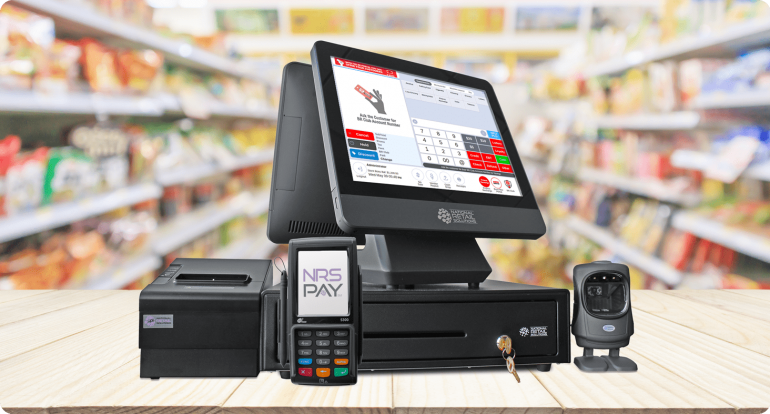
Point of sale systems are used in retail stores to keep track of inventory and sales. When a customer wants to make a purchase, he or she gives the item(s) desired to the cashier, who scans them with a barcode scanner or enters in their prices manually. This prompts a sale being logged into the point of sale system, and inventory being logged out.
The point of sale system will provide the cashier with a running total, which he or she will need to enter into a cash register that in many cases is integrated into the POS system itself. The POS system also keeps track of discounts and other information that may affect prices.
From this point, the customer can choose to have the transaction processed in one of several ways. If they want to use a credit card or debit card, then fees are paid for using that payment method (and sometimes the customer needs to provide an ID). If they want cash back, then money is taken away from the transaction.
When all options are complete, the point of sale system updates its registers to reflect the changes, and the customer is given a receipt. The point of sale system then updates itself with information about what inventory has left the store, making it easier for employees to find items that are low or missing completely.
For some stores, this process will need to be repeated several times during regular business hours. For others, this is just the beginning. For example, inventory-based businesses like grocery stores typically will continue to update their stocks throughout the day or night by processing "tickets" which print out information about items that have come in and gone out of stock.
The cashier scans each ticket when it comes in, and they are stored in a queue in the point of sale system. When the store is closed, an employee will print off a report for each ticket in the queue and use that to make updates.
Some other types of businesses may use their point of sale systems to control access (e.g., turnstiles). Still others may use them as part of inventory tracking, by assigning unique numbers to each item in stock and scanning the item before it leaves the store. This is particularly useful in businesses like high-volume stores that sell products like clothing, where certain sizes or colors may only be available in small quantities at a time.
Properly designed point of sale systems can provide many benefits to costumers, retailers, and companies. The first benefit that point of sale systems provide is an efficient checkout process. Instead of the cashier having to deal with each customer one at a time, multiple customers can be checked out at once by swiping items through a scanner or keying in their prices, which makes it possible for retailers to serve more customers per hour than in the past.
Another benefit is more detailed and accurate records of inventory, which can be used by store managers to determine profitable times for certain types of products, or when they need to restock shelves. A third benefit is faster checkout lines because customers do not have to wait for a store clerk to use a cash register in order to make their purchase.
Point of sale systems are becoming more and more common, as retailers realize how useful they can be. Nowadays even small stores will use point of sale systems to track their inventory, sales, discounts, and other important information.





